Released into the Wild
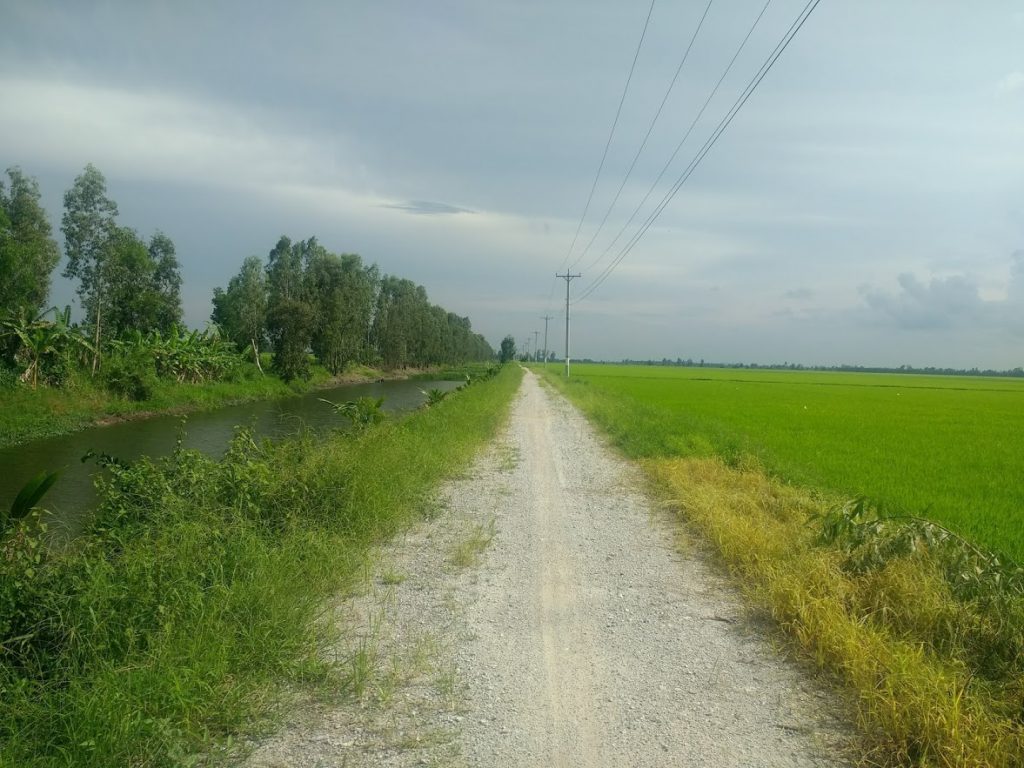
This week marks the week I was finally set free from the office for a few days to visit some AWD sites!
While tipping away at the data I have been given so far I began to think it was a bit daft of me to come in an talk about rice while never having seen the plant in real life!
I mean if someone walked up to me and told me how to feed a little calf, but they’ve never seen a cow in the flesh, I’d definitely tell them where to go 😂

So I jumped at the chance to visit AWD sites the second it was offered, which led me to boarding a plane and travelling to the other side of Vietnam. From Hanoi in the Red River Delta to An Giang in the Mekong River Delta. There, now at least I have physically been in both areas I am studying.
Travelling to Long Xuyen from Can Tho airport we made a pit-stop by a roadside rice field. Here a neighbour of the owner allowed us to look at the field and spoke with us (I don’t speak Vietnamese) so you can just imagine me taking in the views at this point.
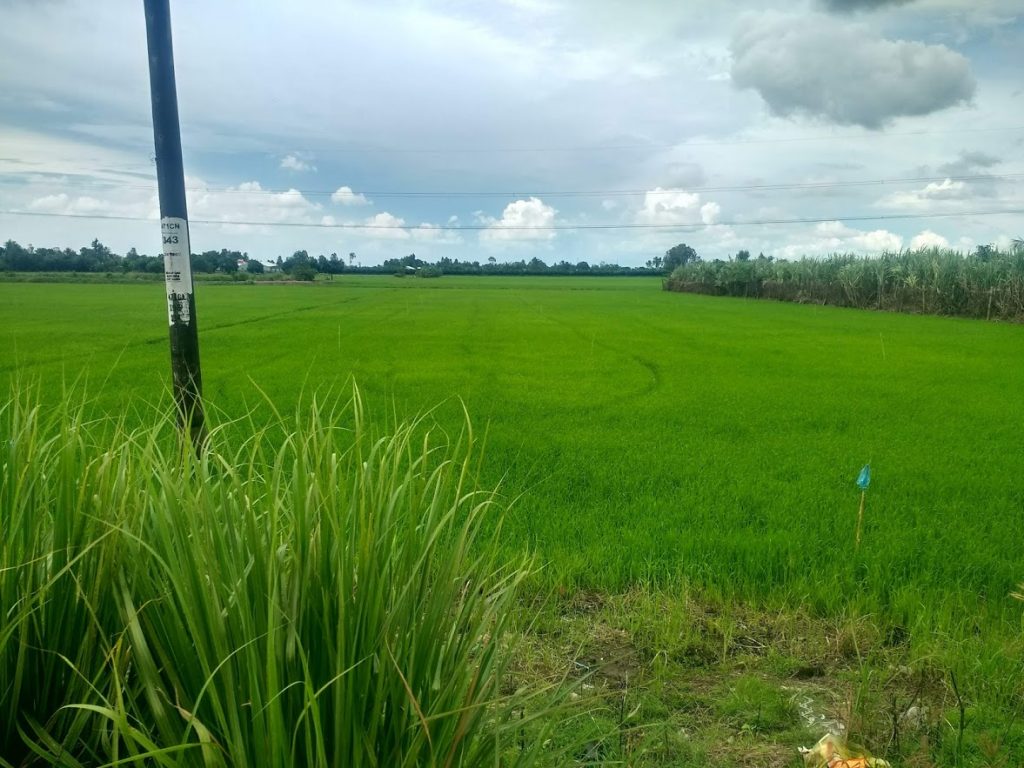
While there I also tried some durian fruit sold by a lady just across the road. Interesting taste, interesting smell. It definitely lives up to its fame for being the smelliest of the fruits.
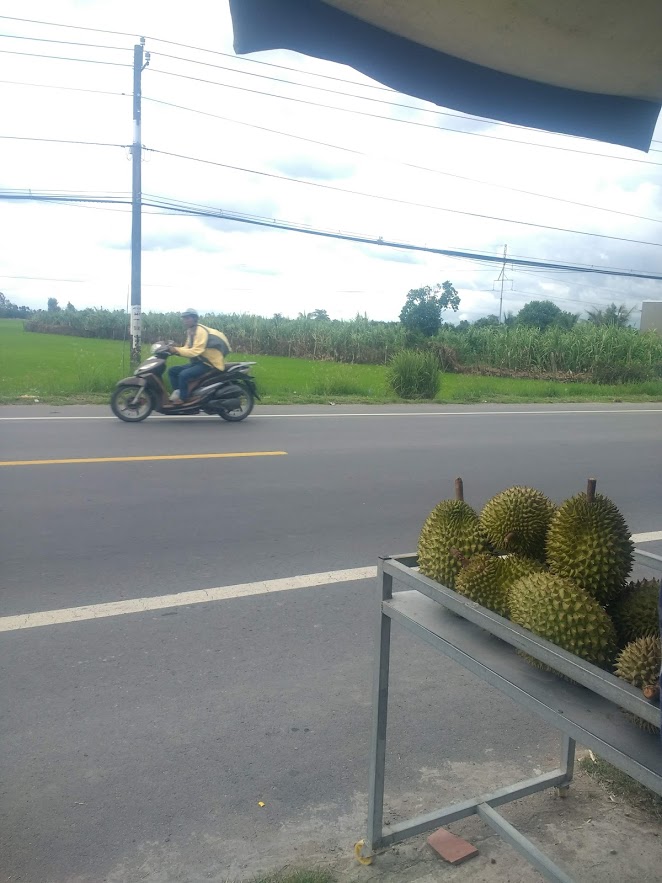
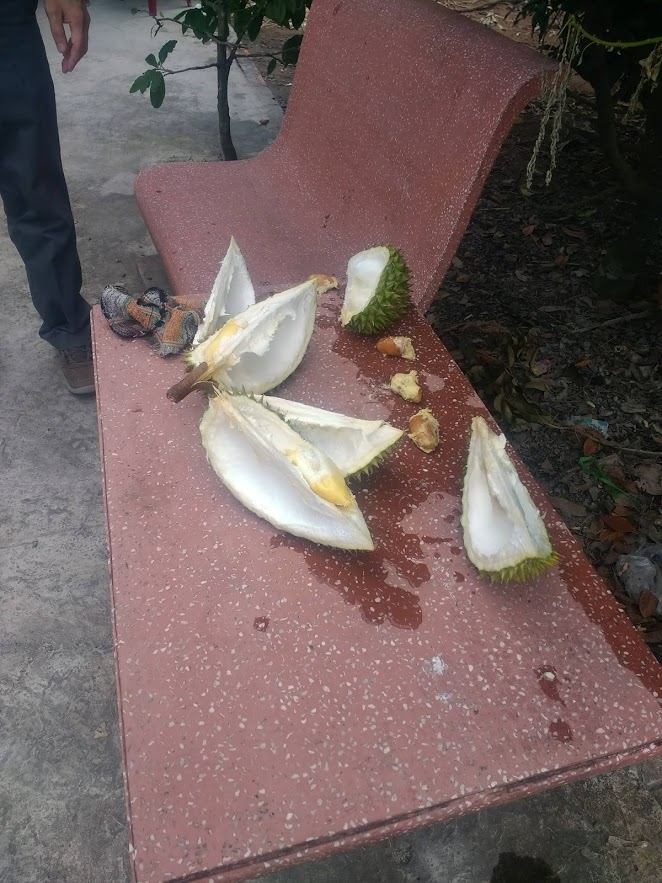
……..
While in An Giang I joined a meeting discussing AWD where most of it went whooshing right over my head due to the fact it was primarily through Vietnamese. But I’m ever grateful to Van for multitasking and translating for me whenever she could!
Then we struck off to visit three AWD sites.
Site A, in the Thoai Son district of An Giang presented a farm where AWD is applied alongside a control. Here I got to see the CSA practice in action; the pani pipe for measuring the water level is marked by four sticks around it. Dykes run along the borders of the field to allow the water to drain during AWD.
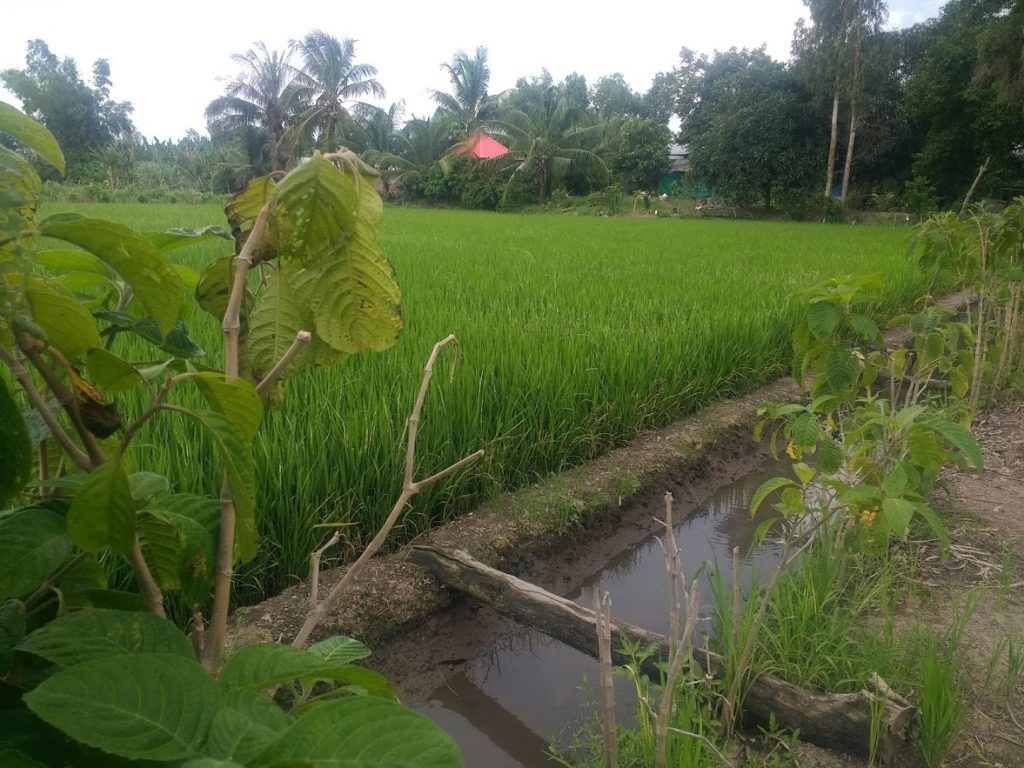
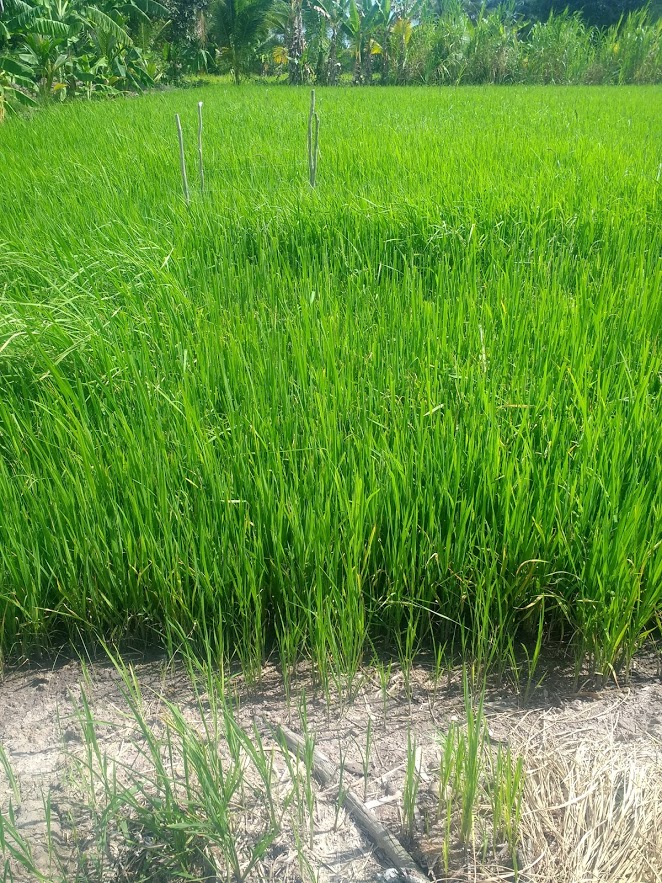
Alternatively, farmers also assess the need for flooding by simply looking at the ground instead of the pani pipe. Once the surface begins to show cracks, brought about by the drying, water is applied to the field.
Sites B and C were located in the Tri Ton district.
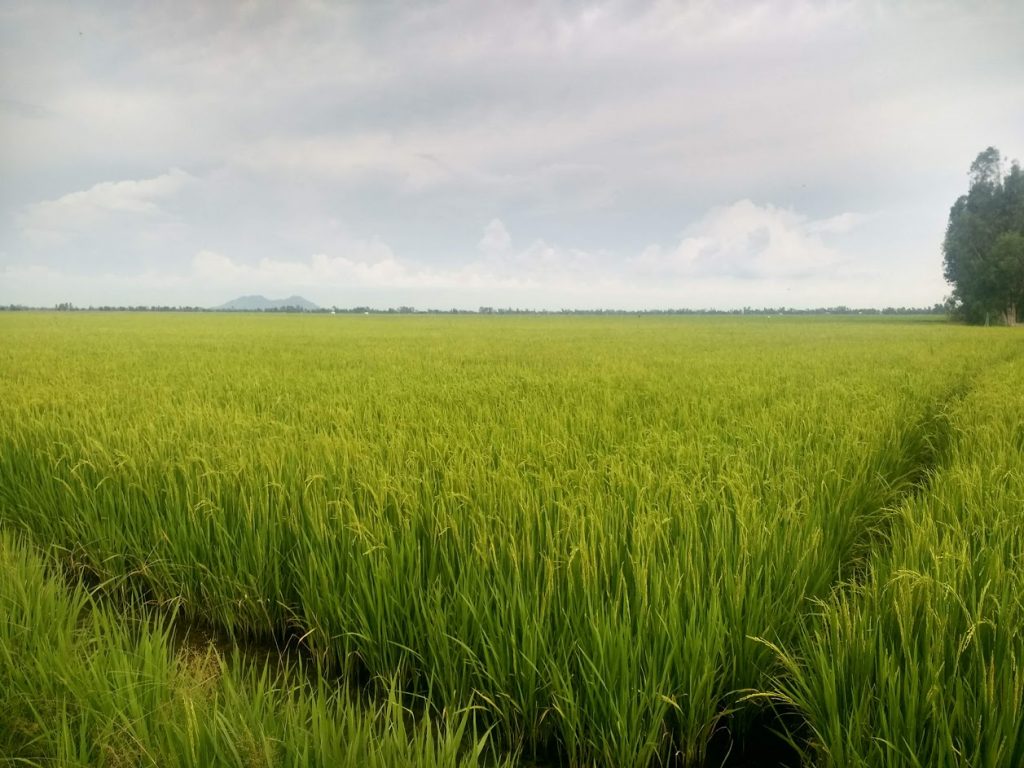
In Site B the farmers are encouraged to use AWD through reduced costs for pumping water. Where AWD is applied the requirement for constant water throughout the growth season is not necessary, therefore reducing the price.
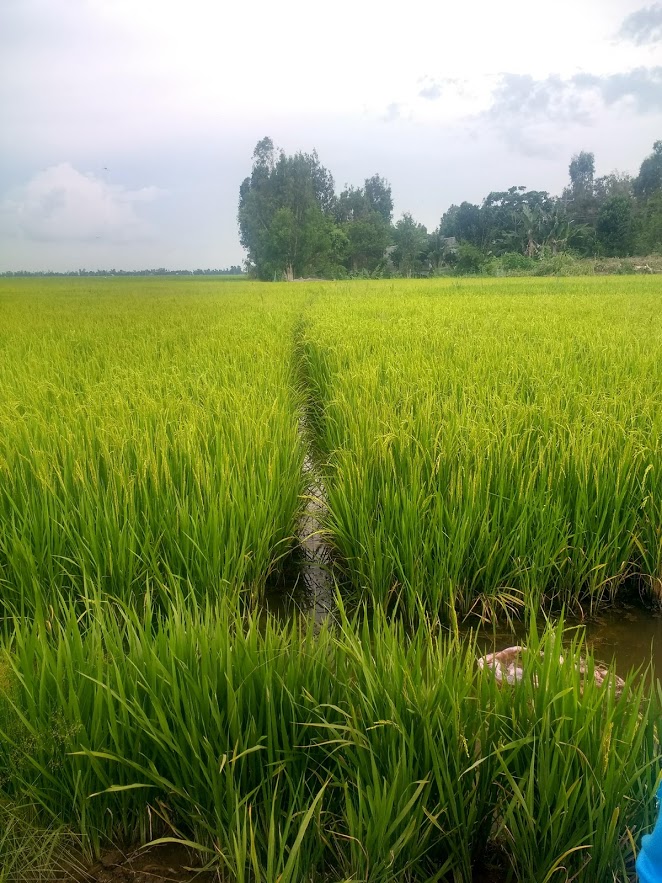
Seeing rice at its various growth stages has grounded my understanding of the plant. For example in Site C the soils are acid sulfate soils, this soil type is not highly suited to the application of AWD. Flooded conditions in soils such as these are more suitable as it reduces the uptake of toxic compounds by the rice plant and improves growth.
